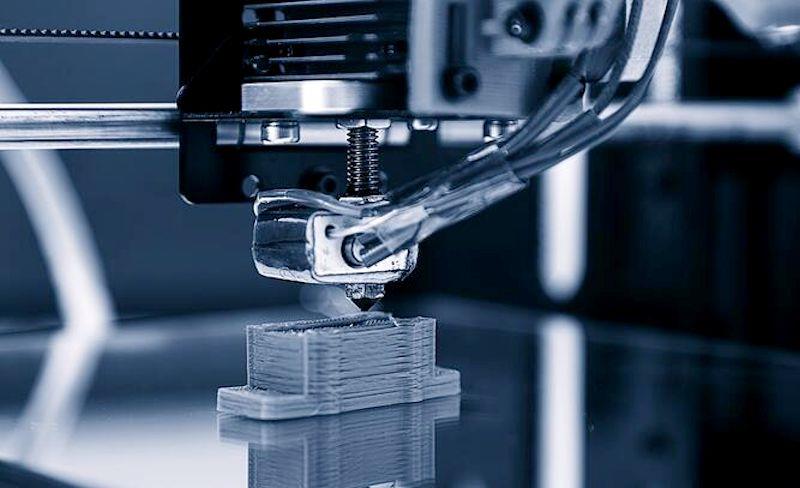
MORFRAC and 3D Printing - A Success Story
by Phil Anniss 9 Apr 2021 09:00 BST

MORFRAC and 3D Printing - A Success Story © MORFRAC
In recent years, 3D printing has revolutionised manufacturing processes. Expiring patents have caused 3D printing costs to plunge and quality to soar, granting opportunities for small-scale manufacturers to experiment - and excel - with 3D printing.
We spoke to Nicolas Goldenberg, founder of Morfrac Systems, to discuss how 3D printing has contributed to the success of their iconic product, the morfblock.
"We started experimenting with 3D printing in 2015. Since then, me and the Morfrac team put a lot of time into it. At some point, I had four different printers in my living room," Nicolas says.
"At the beginning, the idea was to use 3D printing to fast-track prototyping and testing. Soon enough, we realised that with a fine-tuned design and the right materials 3D printing could become a reliable manufacturing process.
"We searched for the best modular, customisable printers, we tweaked them to suit our needs and work with the top-performing materials available on the market. And here we are today, pioneering the use of 3D printing in numerous marine applications."
What are the benefits of 3D printing for a small-scale manufacturer?
Cost-Efficient
For small volumes, 3D printing is more cost efficient than CNC machining and injection moulding.
Accurate
A 3D printer can achieve highly complex designs with a high degree of precision.
Control
3D printing allows for superior control in the manufacturing process. "For example, you can alter the finish by changing the direction of the printhead or the density of the material," Nicolas says.
Batch Size
3D printing frees manufacturers from large batches and offers flexibility. It enables firms to respond and adapt to demand, reducing unwanted stock and waste.
Fast Turn-Around
3D printing streamlines the prototype production process. "You can do the design at a given moment in a given place, and a 3D printer can print it wherever and whenever you want. At Morfrac we implemented a smart cloud-based manufacturing system: the designer can launch, control and intervene in the production from an app. I like to say that my favourite spot of the workshop is my couch," Nicolas says.
Optimisation
3D printing means agility; there are always opportunities for design modification and improvement. "3D printing also grants the ability to easily make custom products," Nicolas says.
3D printing seems like a flexible and cost-efficient solution. There are many 3D printers out there - what's the difference?
Filament
This printer uses raw materials in filament form which are inserted into the printer and heated up. Once heated, the material printhead 'prints' the shape layer by layer, extruding the filament through a nozzle.
| Advantages | Disadvantages | Uses |
|
Cost - Effective
Wide range of materials available
Versatile
Quality output
|
Slow speed (for mass production)
|
Prototypes
Structural Parts
Working Mechanical Parts
|
SLA (Stereolithography)
An SLA printer uses a tank of liquid resin. A laser or UV light is used to cure the resin, creating a solid shape which emerges from the tank layer by layer. The excess resin is then washed away.
| Advantages | Disadvantages | Uses |
|
Superior Surface Finish
|
Reduced range of materials available
Fragile output which cannot take load
Costly
|
Cosmetic details
Prototypes
Not used for final products or mechanical outputs
|
SLS (Selective Laser Sintering)
An SLS printer is the 'next level', reaping the benefits of both a filament printer and an SLA printer. Raw materials are inserted in a powdered form, and the printer utilises a laser beam to melt and solidify the powder.
| Advantages | Disadvantages | Uses |
|
Wide range of materials including nylon
Superior Surface Finish
|
Health risks of powder
Expensive (cost is comparable to a CNC machine)
|
Cosmetic details
Prototypes
Structural parts
Working mechanical parts
|
A filament printer seems to offer a perfect balance
"That's our choice: ample personalisation possibilities and wide range of engineering materials available. At Morfrac, we have developed our own UV-stable, extra-resistant and ultra-light proprietary filament. We use it for our morfblocks, powerfurl components, R&D, prototyping, and to build mock-ups of CNC products. In addition to that, we are 3D printing an increasing number of custom components for our clients who start showing interest in these solutions both for temporary fixes and permanent solutions onboard." Nicolas says.
How do you predict 3D printing will impact the marine industry in the future?
"In the future, I envision there will be a lot going on with composite materials, such as nylon and carbon fibre. Next generation printers are focusing on aluminium, titanium and precious metals in the marine market," Nicolas says.
Morfblocks and the rest of MORFRAC products are available to purchase now at upffront.com. Alternatively, if you have any questions about deck hardware feel free to contact or use the Deck Hardware enquiry form.